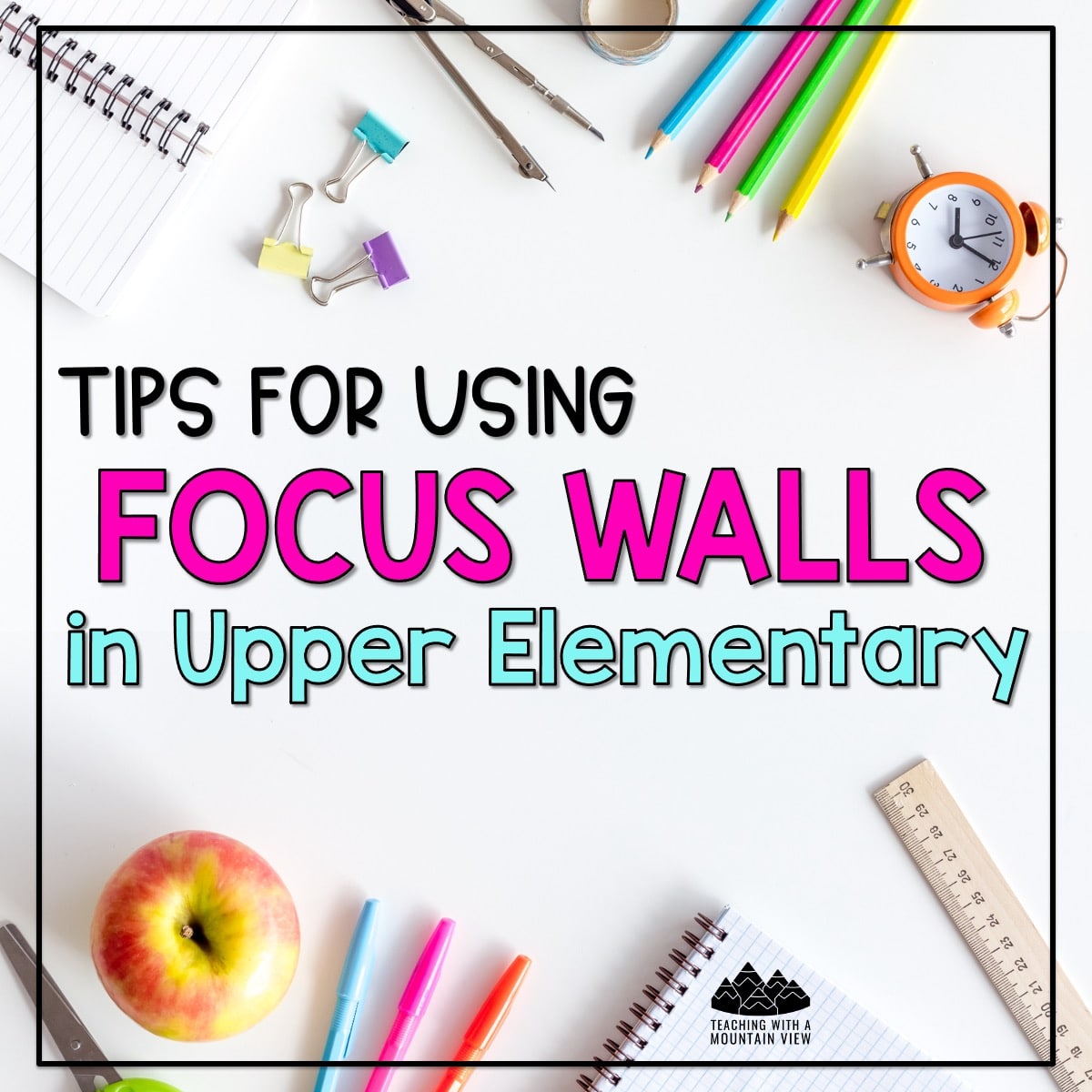
Are you required to display learning objectives or focus walls in your classroom? Many schools now require focus walls in upper elementary as a way to clearly communicate and display what students are learning. While you might be nervous about the work involved to keep your focus wall updated all year, it can promote organization, engagement, and academic success for your students. In this blog post, we’ll explore the benefits of implementing focus walls in upper elementary and provide you with practical tips and strategies to create your very own.
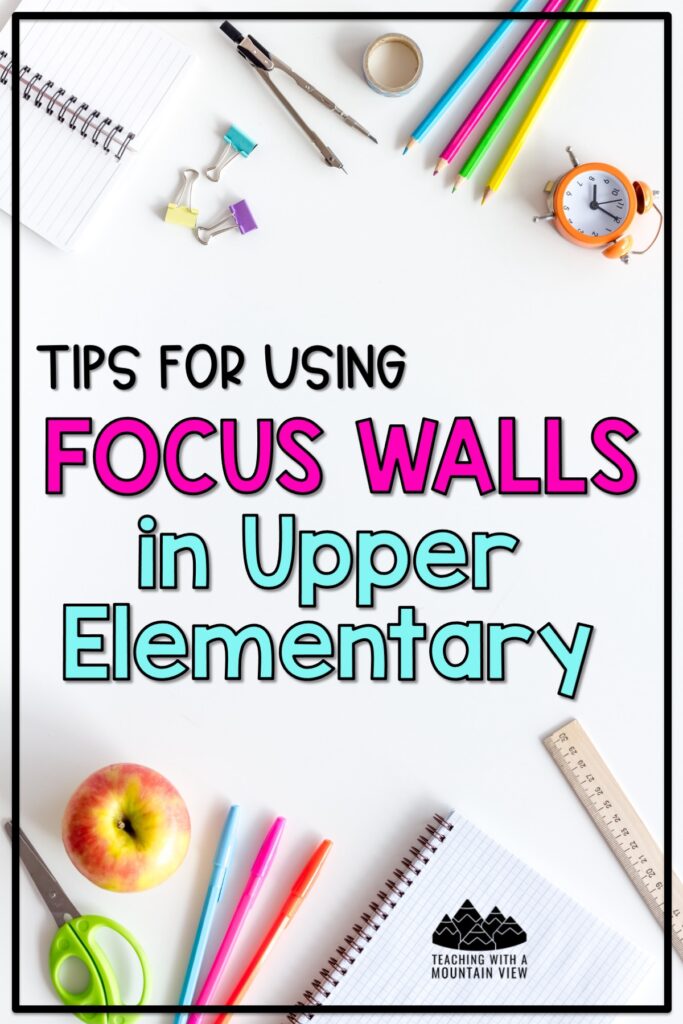
What Are Focus Walls?
If you’re new to focus walls in upper elementary, think of them as a designated area where you’ll display key information and resources to support student learning. It’s a versatile and visually engaging tool that showcases important concepts, learning objectives, and even student work. You might also see domain specific vocabulary here.
The primary purpose of a focus wall in upper elementary is to provide students with a consistent reference point throughout the unit. It can also promote engagement and ownership of the learning process. While the items displayed on a focus wall can vary between classrooms and grade levels, there is often consistency schoolwide too.
Benefits of Focus Walls in Upper Elementary
Implementing focus walls in upper elementary offers numerous benefits for both teachers and students. Here are some of the biggest benefits!
Visual Organization: Focus walls provide a centralized space to display important information such as learning targets, vocabulary words, anchor charts, and sometimes even student work that reflects success of the learning objectives. This area helps students easily locate and reference essential concepts and materials, improving independence and ownership.
Clear Learning Objectives: Focus walls prominently showcase learning targets, objectives, and essential questions related to your current unit. This visual reminder helps students understand the purpose and direction of their learning, leading to a deeper comprehension of the subject matter. These objectives can also communicate current classroom goals to classroom visitors like parents, instruction coaches, and admins. I always recapped each focus wall in my parent newsletter to let them know what we were learning next.
Student Ownership and Increased Engagement: Focus walls can empower students by allowing them to contribute to the display when they complete work that demonstrates mastery of the current learning objectives. You can incorporate opportunities for student collaboration right on the focus wall.
What To Include On Focus Walls
A focus wall in an elementary classroom should display a range of important information and resources to support student learning. Here are some key elements that can be included:
Learning Objectives: Clearly state the learning objectives or essential questions for the current unit or lesson. This could be your current reading skill, math skill, language skill, etc. phrased in student-friendly language.
Vocabulary Words: Display key vocabulary words related to the current unit of study. Include definitions, examples, and visuals to aid in understanding and retention. This post on domain specific vocabulary can help!
Anchor Charts: Showcase anchor charts that serve as visual references for students during independent work or small groups. If you’re looking for anchor chart inspiration, try these posts or these anchor chart templates!
Student Work: Feature exemplary student work that highlights mastery of specific skills or concepts. This promotes a sense of pride and encourages students to strive for excellence!
Reference Materials: Provide graphic organizers, sentence stems, formulas, etc. that are applicable to the current unit.
Interactive Components: This is optional, but you can also incorporate interactive elements like pockets, flip cards, or Velcro strips to encourage student engagement with the learning objectives as they learn more through the unit.
Upper Elementary Focus Walls From Real Classrooms
We had a really great conversation about focus walls in our FREE Inspired in Upper Elementary Facebook group. Visit the group to see many great focus board examples. Do you have your own focus walls to share? Come join the conversation!
Mary Montero
I’m so glad you are here. I’m a current gifted and talented teacher in a small town in Colorado, and I’ve been in education since 2009. My passion (other than my family and cookies) is for making teachers’ lives easier and classrooms more engaging.







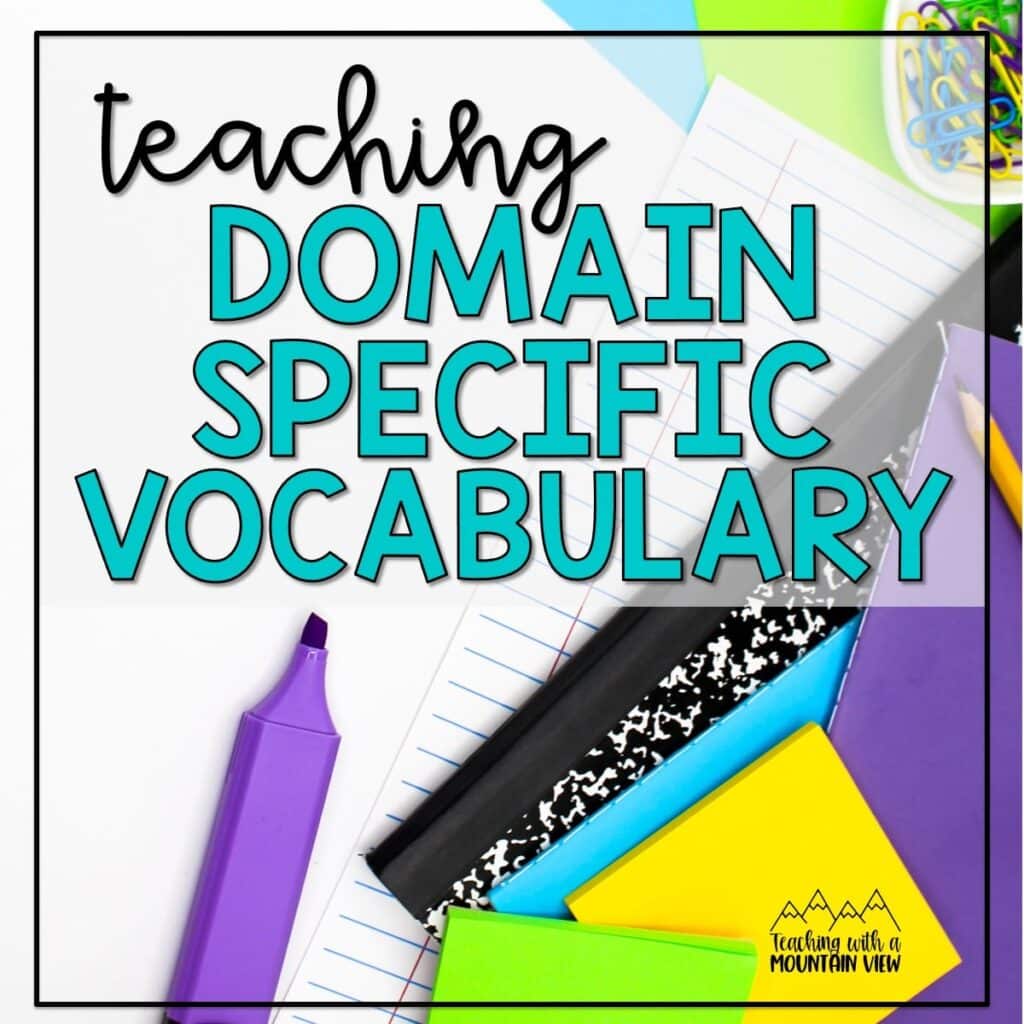
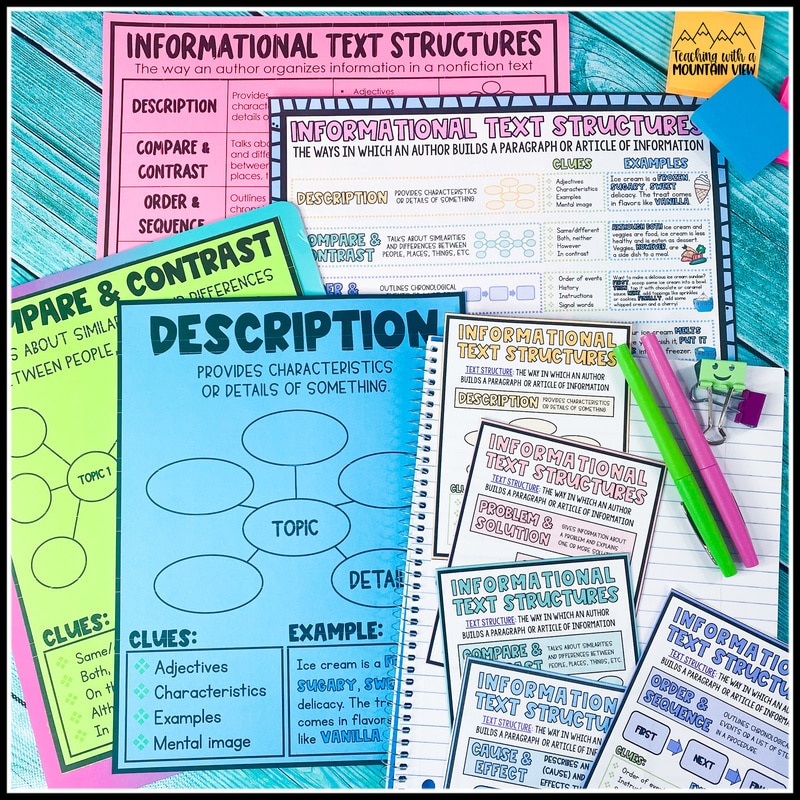
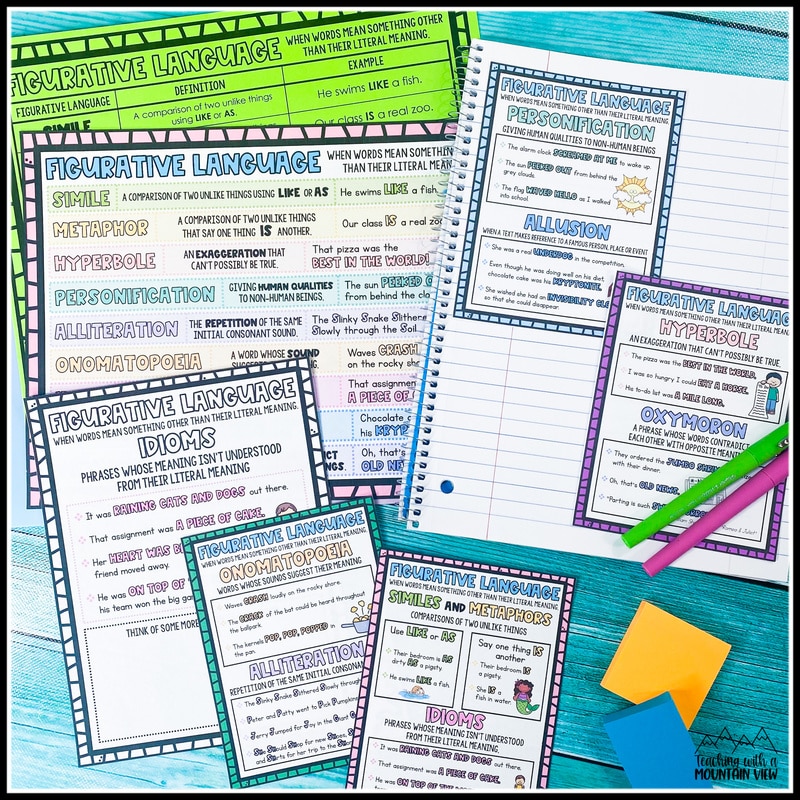





One Comment